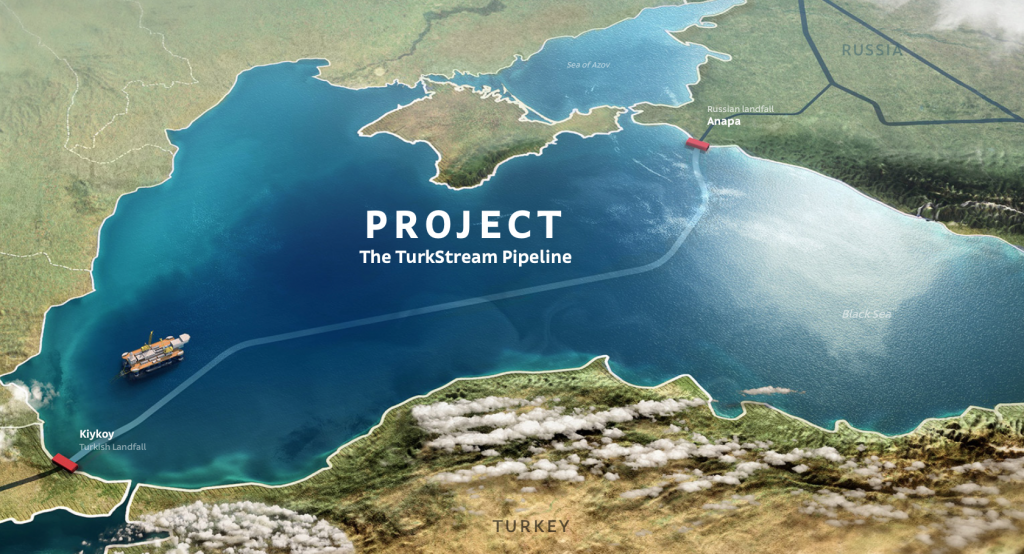An Overview of the Turkstream Gas Pipeline Project Agreement
Editor's note: to be read in conjunction with Perspective for ‘Turkish Stream’ Project: Possible Scenarios and Challenges
The TurkStream Gas Pipeline Project (‘the TurkStream Pipeline’) is a replacement for the South Stream Project.[1] The TurksStream Pipeline is 900 Km long. It will start at the Russian Black Sea coast near Anapa and ends at the Turkish town of Ipsala (see map below). It is envisaged that the TurkStream Pipeline will be supplemented by another gas pipeline to Europe, which would deliver up to 31.5 billion cubic meter of natural gas annually.
Turkey and Russia are facilitating and implementing the TurkStream Project through their national companies BOTAŞ and Gazprom respectively. South Stream Transport B.V., a Gazprom subsidiary, has entered into a contract with Allseas, a Swiss-based offshore pipe-lay construction company, for the construction of the first line of the TurkStream Pipeline’s offshore section. The works are scheduled to commence in 2017 and set for completion in late 2019.
The Intergovernmental Agreement between Turkey and Russian concerning the TurkStream Gas Pipeline Project (‘the Agreement’) was signed by Turkey and Russia on 10October 2016 in Istanbul. The Turkish President signed the law ratifying the Agreement on 06 December 2016. The Russian government approved the draft law on ratification of the Agreement and passed it for consideration by the State Duma on 12 December 2016. At the time of publication, the TurkStream Agreement remains unratified by the Russian Federation.
The Agreement contains several unique provisions, a few of which are highlighted below:
- Article 8.10 provides that the offshore section company and onshore section 2 company shall not be subject to the Turkish laws on the natural gas market, thus excluding the tariff regulation requirements, third party access and unbundling regulations.
- Article 12 provides for an amicable dispute settlement procedure between the Parties concerning the application and (or) interpretation of the Agreement by means of negotiations or consultations, failing which the dispute shall be referred to an ad hoc arbitration court. After a written and detailed notification of the dispute and failing an amicable dispute resolution, disputes relating to tax matters under Article 10 shall be settled under the Rules of Arbitration of the International Chamber of Commerce by one or more arbitrators appointed in accordance with the ICC Rules.
- Article 13 stipulates that the Russian participant in the offshore section company and the Russian participant in onshore section 2 company are considered as investors, and their investments are considered as investments within the context of the Agreement.
[1] For an overview of the South Stream Project and copies of all the governmental agreements, please visit the South Stream Agreement Compendium here: http://mc-academy.org/2016/wp-content/uploads/2017/01/South-Stream-IGAs.pdf ; see also, Newsletter of the International Bar Association Legal Practice Division, Oil and Gas Law, Vol. 3 No. 1 September 2014, http://mc-academy.org/2016/wp-content/uploads/2017/01/Oil-and-Gas-Law-Sept-2014.pdf
MAP OF THE TURKSTREAM GAS PIPELINE PROJECT
 (Source: http://turkstream.info/project/)
(Source: http://turkstream.info/project/)
For more information on the TurkStream agreement, please visit: http://mc-academy.org/turkstream-gas-pipeline-project-a-compendium/



